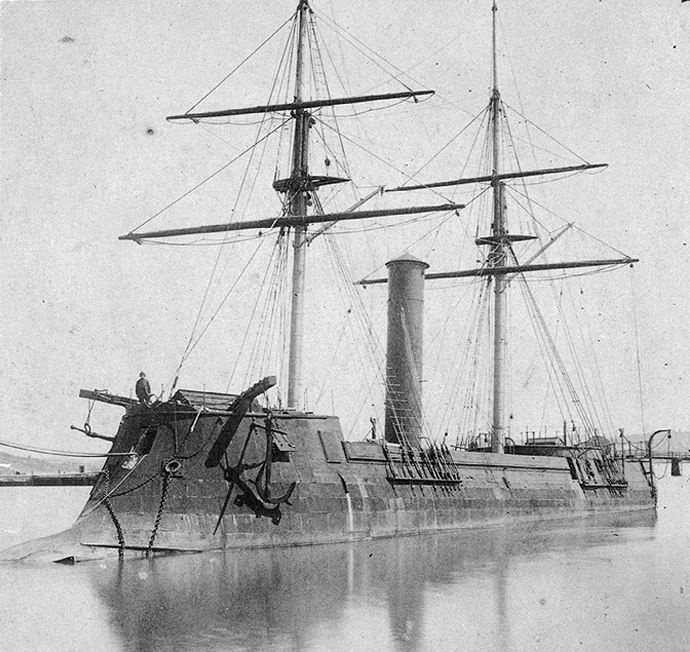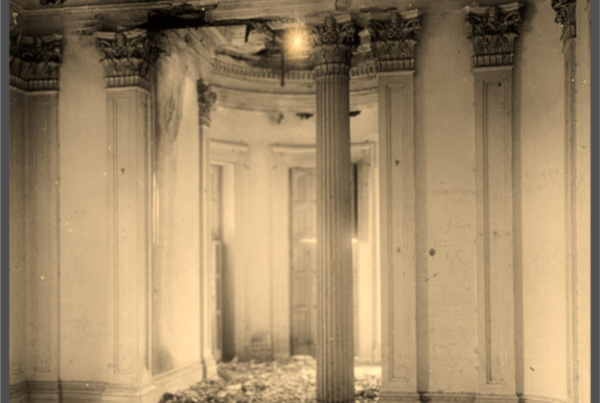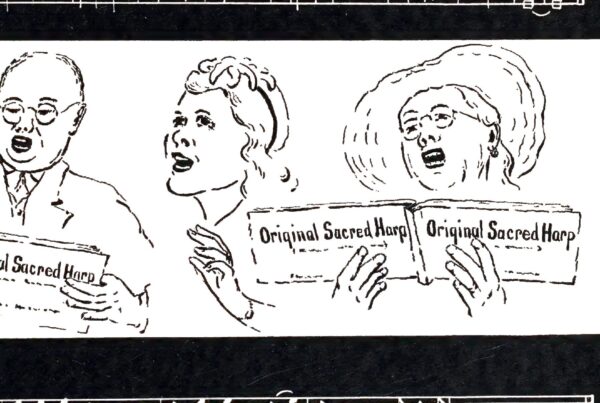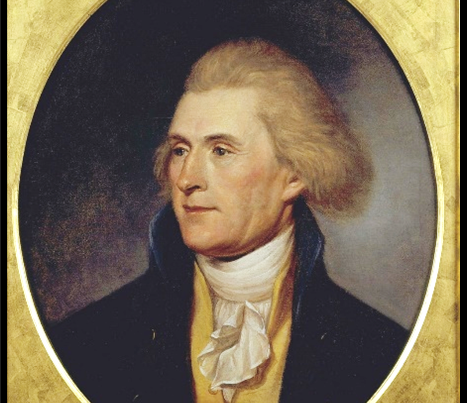When William Faulkner visited Japan in 1955 to attend a literary symposium in Nagano, he noted certain parallels between the aftermath of the Confederacy’s defeat in 1865 and that of Japan’s a century and a half later. In an address, “To the Youth of Japan,” Faulkner summed up these mutual experiences by saying; “My side, the South, lost that war, the battles of which were fought not on neutral ground in the waste of ocean, but in our own homes, our gardens, our farms, as if Okinawa and Guadalcanal had been not islands in the distant Pacific but the precincts of Honshu and Hokkaido. Our land, our homes were invaded by a conqueror who remained after we were defeated; we were not only devastated by the battle which we lost, the conqueror spent the next ten [sic] years after our defeat and surrender despoiling us of what little war had left.”
Faulkner’s basic comparison was quite accurate, but only up to a point; for while the South’s twelve years of “reconstruction” at the hands of the Union had certainly led to the total destruction of everything the South, like Japan, had sought to defend during their respective battles, the end results were far different. For the South, the devastating effects of Yankee “reconstruction” that followed the defeat of the Confederacy caused extremely negative economic and social upheavals that left serious aftershocks throughout the region for almost a century, and still create social reverberations to the present day. In the case of Japan, however, it created an exactly opposite effect, in that what America brought to Japan during its seven years of military occupation led to not only a positive reconstruction of the country, but created a foundation as solid as the Georgia granite from Stone Mountain that was used in constructing Tokyo’s Imperial Hotel. Building on such a foundation, Japan was to eventually grow into the peaceful, thriving nation that ultimately became the world’s second greatest economy, while still retaining much of its unique charm, culture and history.
But the histories of the South and Japan actually date back to the emergence of the former on, and the withdrawal of the latter from, the world stage at the dawn of the 17th Century, as well as a number of somewhat surprising connections in the mid-19th Century. In 1607, the first English colony in the New World was established in the South at Jamestown, Virginia. Meanwhile, four years earlier on the other side of the globe, Japan was beginning what is known as the Edo Period, the two and a half centuries of virtually complete isolation under the Tokugawa Shoganate. Prior to 1603, however, Japan had developed significant trade relations with three European counties, Spain, Portugal, and the Netherlands, and, aside from silk and tea, two of Japan’s other main exports were, like the South’s, cotton and tobacco. Oddly enough, there was even a local slave trade; Japanese who were purchased mainly by the Portuguese and sold in Asia and Europe. It was disgust with the latter and even more importantly, distress over the growing foreign influence in the island nation, including the widespread introduction of Catholicism, that caused the first Tokugawa Shogun, Ieyasu, to slam shut the doors of Japan. Except for a small window of Chinese and Dutch trade through the port of Nagasaki on the southern island of Kyushu, Japan remained completely sealed to the outside world . . . no foreigners in and no Japanese out.
Then, in 1853, an American naval flotilla, the so-called “Black Ships,” under the command of Commodore Matthew C. Perry sailed into Edo (now Tokyo) Bay and at gunpoint forced Japan to open its doors to the West. By a strange coincidence, Commodore Perry’s brother-in-law was Senator John Slidell of Louisiana who would, during the War Between the States, serve as the Confederacy’s representative in France. It was there Slidell was instrumental in securing a powerful ironclad ram warship built by the French firm of Lucien Arman, the CSS Stonewall, that would have been more than a match for any vessel in the Union Navy. Unfortunately for the South, by the time the Stonewall reached Havana, Cuba, in May 1865, the War had already ended, and the warship was ultimately turned over to the United States by the Spanish authorities. Later it was decided to sell the vessel to Japan’s Tokugawa Shoganate for $40,000, but the Boshin War in which the Shogunate was defeated by the forces of the Emperor Meiji delayed matters. The Stonewall was finally delivered to the Emperor’s forces instead, renamed the Kotetsu (Japanese for ironclad), and became the first modern warship in the new Imperial Japanese Navy. The former Confederate vessel played a major role in the naval battles off the northern island of Hokkaido which caused the final defeat of the last Tokugawa forces and the onset of the Meiji Restoration that ushered in the very rapid modernization of Japan.
A further set of coincidences involving Commodore Perry’s visits to Japan had to do with some of the Southern naval officers in the area at that time, such as Lieutenant James D. Johnston of Kentucky who was an officer on Perry’s flagship, the USS Powhatan, and who later became a commander in the Confederate Navy. Lt. Johnston was also aboard the Powhatan on July 20, 1858, when the U. S. – Japan Treaty of Amity and Commerce was signed on the ship. Then, in February 1860, Lt. Johnston served as executive officer aboard that ship when it carried the first delegation from the Tokugawa Shoganate, then called an “Embassy,” to the United States. On that voyage, the Powhatan was commanded by Captain Josiah Tattnall of Savannah, Georgia, who was returning to the United States after serving as acting commander of America’s East India Squadron. At the start of the War Between the States, Tattnall was first made senior flag officer of the Georgia Navy, and later became a captain in the Confederate Navy. A third important Southerner was Lieutenant John M. Brooke from Tampa, Florida, who, in 1860, was in Yokohama as an instructor to the Shogun’s new navy. A Japanese warship, the Dutch-built Kanrin Maru, was ordered to accompany the Powhatan to America, but since none of the Japanese officers had any transpacific navigation experience, Lt. Brooke, as a technical advisor, sailed the vessel to San Francisco. Brooke later became a commander in the Confederate Navy and was involved in creating the South’s first ironclad warship, the CSS Virginia, as well as developing the Brooke rifled cannon, the most powerful gun made in the Confederacy. Brooke was ultimately made chief of the CSN’s Bureau of Ordinance and Hydrography and established the Confederate States Naval Academy.
John Brooke was also closely involved with the first Japanese to become an American citizen, Hamada Hikozo, now generally known as Joseph Heco. Hamada was born in 1837 near the present-day city of Kobe and in 1850, while returning home from Edo (Tokyo) by sea with his stepfather, their ship was wrecked in a typhoon. The boy was among seventeen survivors rescued by an American ship which took them to San Francisco. Hamada then traveled east to Baltimore, Maryland, where he was educated at a Catholic school, and was baptized as Joseph Heco. In 1857, Heco went to Washington, D. C., as the secretary of California Senator William M. Gwin and became the first Japanese to meet an American president, James Buchanan. A year later, Heco became an American citizen and joined Lt. Brooke on a U. S. naval survey of the Chinese and Japanese coasts. He and Brooke finally sailed to Japan in 1859 where Heco became an interpreter for the American consul in Yokohama, and Brooke was later assigned his duties on the Kanrin Maru’s voyage to America.
On that journey, the Powhatan and the seventy some members of the Japanese delegation sailed to San Francisco via Hawaii, at that time called the Sandwich Islands, and then to Washington, D. C., via the isthmus of Panama, landing in America’s capital in May aboard the USS Roanoke. The Japanese mission, therefore, was in Washington during the height of the North-South turmoil, attending numerous official functions, including a formal White House reception hosted by President James Buchanan and attended by a delegation from Congress which included Senator Jefferson F. Davis of Mississippi who was soon to become the president of the Confederacy. Sadly, aside from some interesting comments on race relations in America, no meaningful thoughts in regard to America’s political affairs or the coming military conflict were ever recorded in any of the Japanese journals that were later made public.
On November 8, 1860, the “Embassy” arrived back in Japan, less than half a year before the start of the War, and aside from a few short comments on the conflict contained in the journal of Francis Hall, an up-state New York businessman who resided in Japan from 1859 to 1866, and who also served as a foreign correspondent for Horace Greeley’s New York Tribune, very little is known about Japanese thoughts on events in America during the War. The only actual reaction by the Japanese recorded by Hall was their shock over a twenty-five per cent decline in the price of raw silk following the bombardment of Fort Sumter. The closest Japan ever actually came to the War itself was in the spring of 1865 when the Confederate raider, the CSS Shenandoah, sailed past the Pacific coast of Japan on its way to the North Pacific and Bering Sea to destroy the American whaling fleet. Since there is no record that the captain of the Shenandoah, Commander James I. Waddell, ever came into contact with any Japanese vessels, or made any attempt to land anywhere in Japan to obtain fuel or provisions, it will never be known what type of reception would have been accorded the Confederate warship. Ironically, the CSS cruiser that sank so much Union shipping in the Pacific had been built in Scotland in 1863 as the Sea King, and was originally designed to transport tea to England from China and Japan.
Furthermore, there is no recorded effort on the part of the Confederacy to actively solicit any form of aid or recognition from Japan; and even if there had been, given the vast distance between the nations, and the extreme difficulty of travel and communication at the time, neither nation would have been of any practical benefit to the other. Moreover, the only viable item the South had to offer Japan in exchange for such possible assistance was the same it provided to England and France for their aid, cotton, a commodity that Japan already had in abundance. It would remain until after World War Two that any actual ties would be developed between Japan and the former Confederate states. In the mid-1970s, as Japan was building its economic powerhouse, or as futurist Herman Kahn would term it, “the emerging Japanese superstate,” American states were eager to seek Japanese investment for their areas. The most aggressive and successful efforts by far were those made by the members of the Southeast U. S. Association. In 1976, the state governments of Alabama, Florida, Georgia, Mississippi, North and South Carolina, Tennessee and Virginia, as well as a number of private interests in each state, decided to make a joint effort to attract Japan’s investment and trade to the region. The Japanese reciprocated by forming a mirror-image group, and the two associations still hold annual meetings alternately in both counties, with each state hosting the biennial gathering on a rotating basis.
This joint effort has produced the largest concentration of major Japanese manufacturing facilities anywhere in the United States, making everything from automobiles to sanitary fixtures. This was brought about in large part by the willingness of the Southern states to work together as a team, a move that greatly impressed the consensus-oriented Japanese business community. Then, when the Japanese actually saw what the South had to offer in the way of land and resources, its able workforce backed by strong right-to-work laws, and an outstanding transportation and shipping network . . . all topped off with traditional Southern hospitality, an agreeable climate, and virtually year-round recreational facilities, particularly golf, it was easy to see why the South rapidly became home for so much Japanese industry and tourism.
I really feel Faulkner would have been well satisfied with the turn of events in both Japan and the South.







